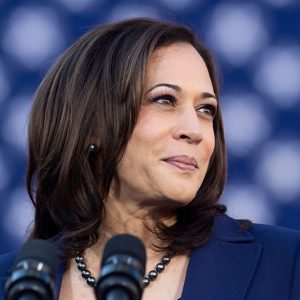For another point of view, see: Counterpoint: Harris’ Price Controls Won’t Tame Inflation
As the warmth of summer finally begins to ease, an already feverish election season will continue heating up. So, let’s do a temperature check on the sliver of folks still deciding about their voting based on finances. Which candidate has articulated an economic agenda that will be most helpful to you?
The answer is that Kamala Harris has an economic agenda that would help the broadest section of the population in ways that are most helpful.
Let’s take a look at the top proposals from each candidate.
First, if you haven’t noticed, Donald Trump frequently goes into great detail about his personal grievances and topics of division. However, details on solutions to issues affecting most Americans, more often than not, come up short.
One of the more specific economic proposals is that Trump wants to double down on tariffs for imports — 10 percent to 20 percent on imports from all countries and upward of 60 percent on imports from China. We need to realize that while there are targeted reasons to deploy tariffs in certain circumstances, the benefit is hard to see as a long-term strategy. Not only will this increase the cost of goods coming from other countries for American consumers already struggling with the effects of pandemic inflation and “greedflation,” but it will also hurt American businesses that sell their goods overseas. These factors seriously mute the intended potential positive effect of turning American consumers toward domestically produced goods.
Trump also wants to extend the tax cuts enacted during his first term. While these did bring down taxes for most Americans, the benefits are seriously imbalanced toward those already wealthy.
Trump also continues ranting against undocumented immigrants, offering crackdowns and deportations. I bring this up because, in addition to the human effect, this will devastate our economy.
Other proposals from Trump include not taxing tips or Social Security income, implementing regulatory reform, and more drilling for oil and natural gas, which he thinks will bring down inflation.
Vice President Kamala Harris has her economic agenda. These are not overly detailed, but compared to Trump’s brief rants, they do seem more so.
Harris has come out pledging to crack down on price gouging, even offering a ban on such activity. Past efforts on this haven’t always come to fruition, but highlighting the problem and making an attempt are worthy.
Harris wants to ease the cost of housing with a range of proposals, mostly tax credits to help first-time home buyers, incentivizing the building of starter homes and affordable housing, and developing unused public land to build more housing.
Harris also proposes increasing the child and earned income tax credit. Additionally, her more nuanced approach to the challenges of immigration works toward easing the pressure on the border. Still, it provides sensible pathways to citizenship that would minimize the effect on the economy.
On healthcare, Harris wants to open up more Medicare price negotiation eligibility, lower the cap on insulin, cap out-of-pocket costs for prescription drugs at $2,000, and extend subsidies for the Affordable Care Act.
Harris has an economic agenda more closely aligned with workers and organized labor. It’s essential that everyone benefits from fair wages, workplace protections, good benefits and a strong labor movement.
The candidates largely agree on a few items, like not taxing tips. However, Trump’s top-heavy, sound-bite approach to economic issues does not stack up to the more comprehensive Harris approach.
Harris provides a warm embrace to working-class citizens while the effect of Trump’s proposals leaves most people out in the cold. Trump will claim he is out for you, but he is only out for himself. Those closest to him testify to this. Don’t buy his lies; embrace the people who have your back: Vote Democratic.

